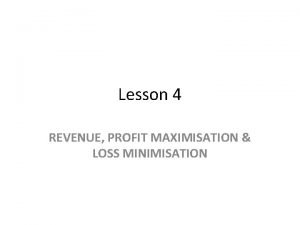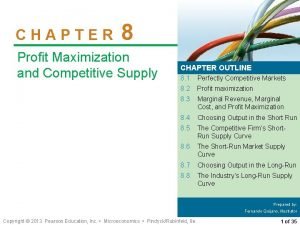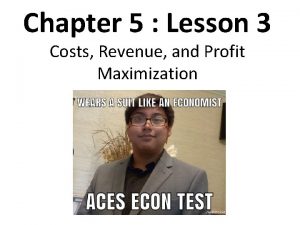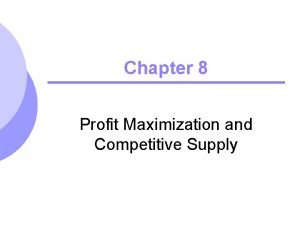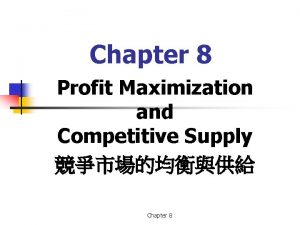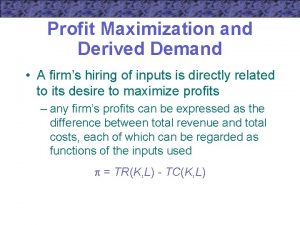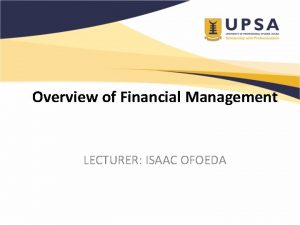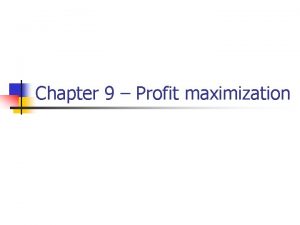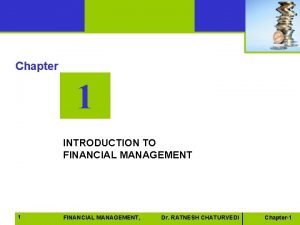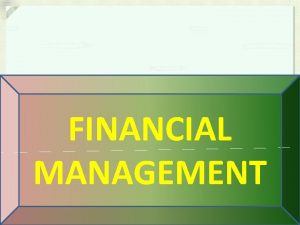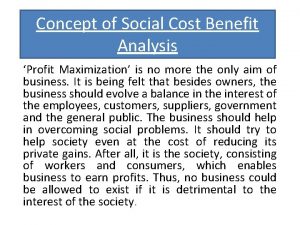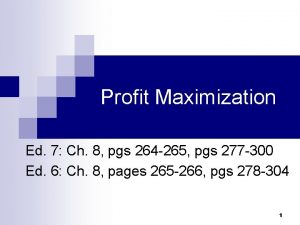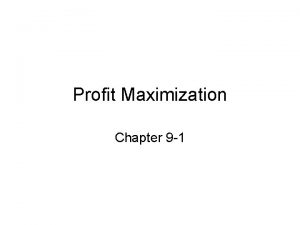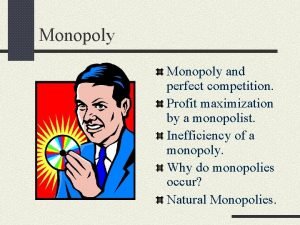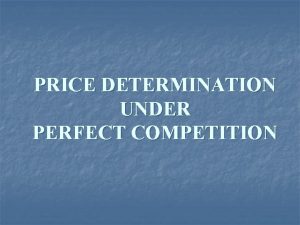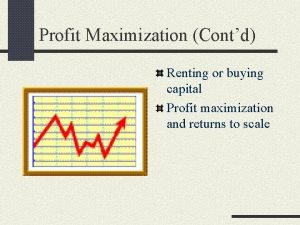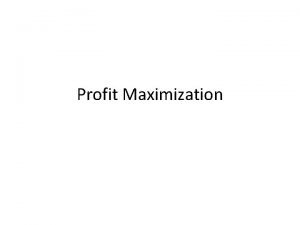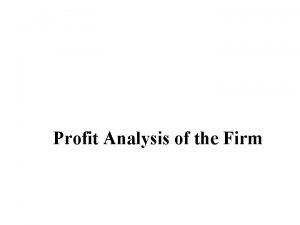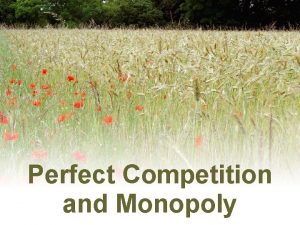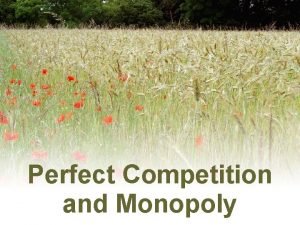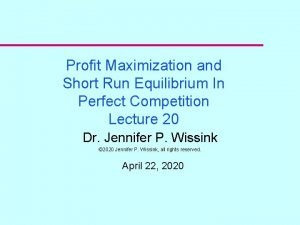Chapter 7 Profit Maximization and Perfect Competition Chapter













- Slides: 13

Chapter 7 Profit Maximization and Perfect Competition Chapter 7 Slide 1

Choosing Output in the Long Run n In the long run, a firm can change all its inputs, including the size of the plant. n We assume free entry and free exit. Chapter 7 Slide 2

Output Choice in the Long Run Price ($ per unit of output) In the long run, the plant size will be increased and output increased to q 3. Long-run profit, EFGD > short run profit ABCD. LMC LAC SMC D $40 SAC A C G E B P = MR F $30 In the short run, the firm is faced with fixed inputs. P = $40 > ATC. Profit is equal to ABCD. q 1 Chapter 7 q 2 q 3 Output Slide 3

Output Choice in the Long Run Price ($ per unit of output) Question: Is the producer making a profit after increased output lowers the price to $30? LMC LAC SMC D $40 SAC A C G E B P = MR F $30 q 1 Chapter 7 q 2 q 3 Output Slide 4

Choosing Output in the Long Run n Accounting Profit & Economic Profit l Accounting profit l Economic profit uwl = R - w. L - r. K = labor cost urk = Chapter 7 = R - w. L cost of capital Slide 5

Choosing Output in the Long Run Long-Run Competitive Equilibrium n Zero-Profit l If R > w. L + rk, economic profits are positive l If R = w. L + rk, zero economic profits, but the firms is earning a normal rate of return; indicating the industry is competitive l If R < wl + rk, consider going out of business Chapter 7 Slide 6

Choosing Output in the Long Run Long-Run Competitive Equilibrium n Entry and Exit l The long-run response to short-run profits is to increase output and profits. l Profits will attract other producers. l More producers increase industry supply which lowers the market price. Chapter 7 Slide 7

Long-Run Competitive Equilibrium • Profit attracts firms • Supply increases until profit = 0 $ per unit of output Firm Industry S 1 LMC $40 LAC $30 P 1 S 2 P 2 D q 2 Chapter 7 Output Q 1 Q 2 Output Slide 8

Choosing Output in the Long Run n Long-Run Competitive Equilibrium 1) MC = MR 2) P = LAC u No incentive to leave or enter u Profit = 0 3) Equilibrium Market Price Chapter 7 Slide 9

Choosing Output in the Long Run n Economic Rent l Chapter 7 Economic rent is the difference between what firms are willing to pay for an input and minimum amount necessary to obtain it. Slide 10

Producer Surplus n Producer surplus measures the difference between the market price that a producer receives and the marginal cost of production. Chapter 7 Slide 11

Firms Earn Zero Profit in Long-Run Equilibrium Ticket Price LMC LAC A baseball team in a moderate-sized city sells enough tickets so that price is equal to marginal and average cost (profit = 0). $7 1. 0 Chapter 7 Season Tickets Sales (millions) Slide 12

Firms Earn Zero Profit in Long-Run Equilibrium Ticket Price Economic Rent LMC LAC $10 $7 A team with the same cost in a larger city sells tickets for $10. 1. 3 Chapter 7 Season Tickets Sales (millions) Slide 13
 Profit maximization
Profit maximization Profit maximization and competitive supply
Profit maximization and competitive supply Cost revenue and profit maximization guided reading
Cost revenue and profit maximization guided reading Profit maximizing output
Profit maximizing output Competitive supply
Competitive supply Monopsony profit maximization
Monopsony profit maximization Limitations of profit maximization
Limitations of profit maximization Normal profit vs economic profit
Normal profit vs economic profit Module 53 featured worksheet profit maximization
Module 53 featured worksheet profit maximization Wealth maximization
Wealth maximization Financial management meaning
Financial management meaning Benefits of profit maximization
Benefits of profit maximization Social cost of monopoly
Social cost of monopoly Profit maximization
Profit maximization
